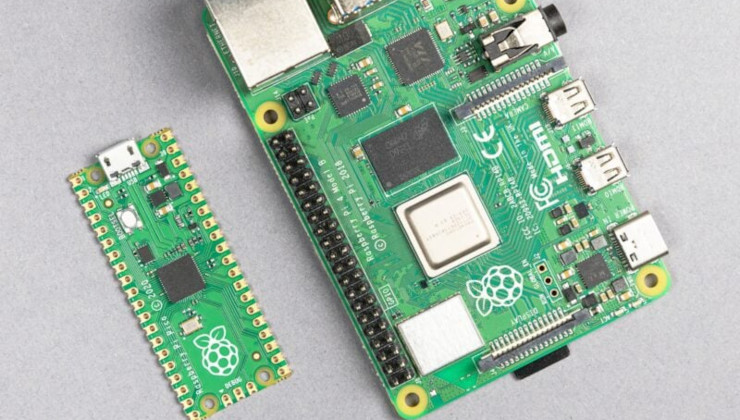Valve continue to cook up plans for more exciting upgrades to the Steam Deck, with Refresh Rate Switching looking like it's on the way. Not ready quite yet with work to do but the idea is great.
In response to a video from YouTuber The Phawx who made it work on Windows, Valve developer said this on Twitter:
We've been really excited to bring refresh rate switching to Deck to deliver smooth frame pacing in arbitrary FPS limit scenarios, but the current screen blanking time when switching is a bit much. We've been doing work behind the scenes to improve it, coming soon!
Having the ability to force the Steam Deck screen to a specific refresh rate is going to come with plenty of benefits for so many games that can't hit 60FPS on the Steam Deck. Really, for battery life anyway, you will want to run lower than that a lot of the time for tons of games.
The point isn't just battery life of course, which is a big concern, but how smooth games look and feel overall and being able to lock the panel a bit lower could make all the difference. Looking forward to seeing what Valve come up with, and it will likely be as easy as flicking a switch like the current FPS limiter on Deck.
The Steam Deck just keeps on getting better!
That said, I do not play any FPS nor multi-player, so...
Quoting: mahagrFor me 30 FPS in a Steam Deck bothers me a lot less than I thought. That and 800p resolution. I would never play anything under ~55 FPS in a large screen, but in a small screen I hardly notice the low frame rate.This. I hate playing anything under 60 fps on my main system with a 34" ultra wide screen, but 30fps on the Deck is actually fine for games like Red Dead Redemption 2 for me. It doesn't feel laggy at all.
That said, I do not play any FPS nor multi-player, so...
Quoting: Spl-itI think this has a bit to do with expectations and what you “feel you ought to get” out the system on which you’re playing, performance wise. E.g. on my Switch I’m “ok” with even “simple” games (e.g. currently playing Link’s Awakening) having severe frame dips, while on my PC I’m annoyed at sub-50 dips (recently played all Arkham games) even though I play both systems on the same TV.Quoting: mahagrFor me 30 FPS in a Steam Deck bothers me a lot less than I thought. That and 800p resolution. I would never play anything under ~55 FPS in a large screen, but in a small screen I hardly notice the low frame rate.This. I hate playing anything under 60 fps on my main system with a 34" ultra wide screen, but 30fps on the Deck is actually fine for games like Red Dead Redemption 2 for me. It doesn't feel laggy at all.
That said, I do not play any FPS nor multi-player, so...
Quoting: GuestI used this kind of tricks to play Rise of the tomb raider at 48hz, but the input latency was so bad that i opted for 75hz instead.Couple of things could cause the latency there. If you managed to set the panel to 48Hz it may not truly have been running at that rate and internally stretching arbitrary frames or it may have perfectly ran the panel at that refresh but the compositor was doing a crap effort of syncing to that rate (wasn't mutter notorious for doing that for a while?). If you were using the decks frame limiter you always run the risk of artificially (as in worse than 30FPS input latency should be) inflating latency depending on how clever the game engine is. Some games will hold up processing everything else until that frame time has expired where as others will go "hey I don't need to make another frame for a while. Let's do the other bits". Some games seem capable of the latter if you use their in game limiter but not when an external application holds up the frame rate. Annoyingly most games with their own FPS limiter don't allow very fine grained choices. You'd think 45/48 FPS would be a more common option. 45 FPS would be a good compromise on the Steam Deck as many games can't quite reach 60 and jumping from 30 to 45 FPS is night and day.
Can't even imagine the feeling with a FPS.
Quoting: Guest(2/30)*1000=66+msecsOuch that would feel like jelly.
A lot of games do seem to probe during frame intervals sadly. And I think with panels being so fast now with such powerful GPUs (no matter how unobtainable) to back them up with, Devs are taking the easy route rather than optimising input at low frame rates.
I agree it's better to have more in sync input than butter smooth frames otherwise it just gets frustrating and disorientating.
Quoting: GuestI used this kind of tricks to play Rise of the tomb raider at 48hz, but the input latency was so bad that i opted for 75hz instead.I didn't know the Steam Deck's display could be overclocked. It's an interesting avenue for those retro games running at 35 or 70 FPS (and without source ports that support arbitrary framerates).
Can't even imagine the feeling with a FPS.
BTW, since the deck uses Wayland, things are not so easy like with xorg and a custom EDID has to be crafted and loaded at boot by modifying the kernel command line.
https://github.com/kevinlekiller/linux_intel_display_overclocking
(skip the xrandr part ofc)









 How to setup OpenMW for modern Morrowind on Linux / SteamOS and Steam Deck
How to setup OpenMW for modern Morrowind on Linux / SteamOS and Steam Deck How to install Hollow Knight: Silksong mods on Linux, SteamOS and Steam Deck
How to install Hollow Knight: Silksong mods on Linux, SteamOS and Steam Deck